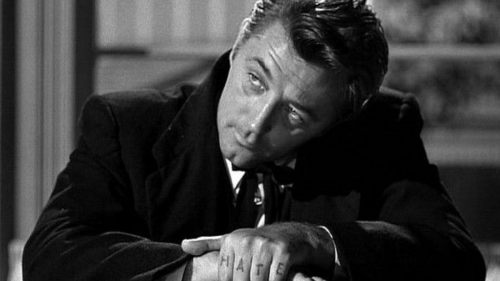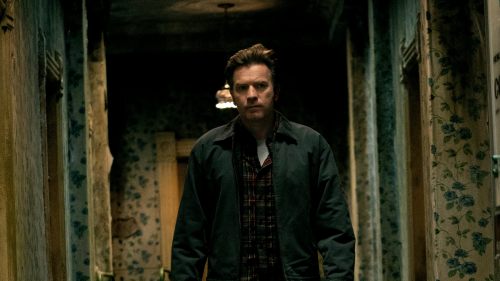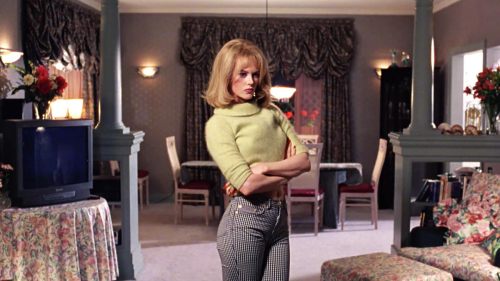Cover to Credits: THE INNOCENTS
"The book was better" is a phrase heard often in conversations about book-to-film adaptations. "Don't judge a book by its movie" is another common jab. While we've all uttered some version of this sentiment at one point or another, there have been those rare occasions when the opposite is true. As a lifelong bookworm and cinephile, I've discovered that whether I read the book before or after seeing the movie can have a profound influence on my enjoyment of the story across both mediums. In this column, I’ll be checking out old and new adaptations to further explore both sides of that experience. In the process, I hope to unveil how these two vastly different mediums work together to tell the same story, from cover to credits.
---
“We were united in our danger. They had nothing but me, and I—well, I had them.”
- Henry James, The Turn of the Screw
In 1961, director Jack Clayton adapted Henry James’s 1898 novella The Turn of the Screw into one of cinema’s most exquisitely beautiful and genuinely unsettling ghost stories. For years, the ambiguity of James’s original text has divided readers and critics alike, sparking endless debate over what is and isn’t real in the eyes of its unreliable narrator. Unnamed in the novella, the pretty young governess obtains her first job far from home in the gothic estate of Bly where she begins to suspect a malevolent presence may be haunting her two precocious charges. Clayton’s aversion to committing to one interpretation of the novella over another inspired his invitation to Truman Capote to adapt the screenplay by way of William Archibald’s 1950 play entitled The Innocents. Keeping the title while ditching Archibald’s stance that the ghosts were unquestionably real, Capote’s childlike voice and Freudian dialogue heightens the mysterious, psychosexual subtext of the story. In the end, this approach deliberately invites the same divisive interpretations as James’s book by honoring his elusive style and encouraging the viewer to decide what is real and what is not.

We know very little about Miss Giddens (Deborah Kerr) as she enters Bly to assume her position as the governess of two orphaned children. Raised by her father – a vicar – her religious upbringing explains to some degree her innate desire to safeguard the children from any threat of evil. Yet whether she actually invents the existence of that threat remains unclear. At twenty years older than the inexperienced governess of James’s tale, Kerr’s distinguished presence heightens the loneliness and sexual frustrations of an unmarried woman living on her own for the first time. Following her through the grounds of the celestial estate – contrasted by visuals of decaying statues in a garden of wilting white roses and claustrophobic corridors – the luminous black and white cinematography of Freddie Francis (The Elephant Man, Glory) conjures an atmosphere of haunting isolation. Gradually, light gives way to dark, unveiling the shadowy depths of Miss Giddens’s fragile psyche as pleasant beginnings turn to unsettling horrors.

Hired by the children’s wealthy uncle (Michael Redgrave), who unashamedly has “no room, mentally or emotionally” for his niece and nephew, Miss Giddens is given “supreme authority” over their care as well as that of the entire household. The uncle’s one stipulation is that she must never contact him under any circumstances, easily entrusting her with complete responsibility so that he may selfishly continue his carefree bachelorhood in London. Since Miss Giddens remains as much a mystery as her eventual claim that the ghosts of the former groundskeeper, Peter Quint (Peter Wyngard), and her predecessor, Miss Jessel (Clytie Jessup), are possessing the children, the validity of her story raises many questions. Has she gone mad? Or are the seemingly innocent children “playing or being made to play monstrous games”?

Although the children strike her as amicable little angels, these “innocents” are far from heavenly creatures. Under Clayton’s consummate direction, each moment Miles (Martin Stephens) and Flora (Pamela Franklin) appear on screen makes the hair on the back of your neck stand up. Tethering them to the sinister spirits of Peter Quint and Mary Jessel – who we learn from Bly’s long-suffering housekeeper, Mrs. Grose (Megs Jenkins), conducted a lascivious and often violent affair in front of the children – plants the seed of suspicion that makes their very presence disturbing. Every stolen glance or knowing smile the two exchange is laden with mischief. Every bump in the night conspired for their amusement.

As Miles, Martin Stephens (whose previous role in The Village of the Damned no doubt schooled him in the art of being creepy) is phenomenal at portraying wisdom well beyond his years, a trait that becomes increasingly disquieting each time he refers to his governess ever so snidely as “my dear.” Having been expelled from boarding school for reasons Miss Giddens chooses to ignore while subconsciously imagining the worst, the little gentleman’s influence over his sister, along with his disturbingly devilish and inappropriate advances toward Miss Giddens, only confirms her suspicions that he is not himself. Ultimately, it is never clear whether the ghosts of Peter Quint and Mary Jessel are tricks of her own mind, tricks being played by the children, or actual spirits intent on possessing Miles and Flora. The only thing certain is that none of the residents of Bly manor are as innocent as they seem.

As in James’s ghost story, the horrors seen in The Innocents are less frightening than those it awakens in our imagination. Left questioning whether loneliness and unrequited desire could possibly have led Miss Giddens to invent these unseemly tales of malevolent spirits gives way to the shocking realization that the children are in no danger and she herself has become the threat. While there’s no subtlety in the film’s symbolic nod to the death of childlike innocence, from the decaying beauty of the estate to the wilting roses, the lines between reality and the supernatural are as blurred as the candlelit corridors closing in on her as she endeavors to protect them all from the unknown.

However you choose to interpret James’s tale, there’s no denying the allure of its mystery has kept the ghosts of Bly manor alive for more than a century. Earlier this year, it was announced that Mike Flanagan is adapting The Turn of the Screw for Netflix, along with other ghost stories by James, as The Haunting of Bly Manor. Having proven his talent for adaptations with Shirley Jackson’s The Haunting of Hill House and Stephen King’s Doctor Sleep, even my undying love for Clayton’s marvel of a film does nothing to deter my excitement for what Flanagan will bring to James’s haunted domain.
Until then, the one thing I know for certain is, real or not, the ghosts of Bly manor seem pretty determined to haunt us forever.



